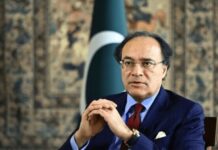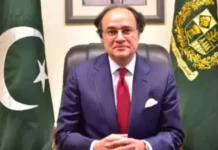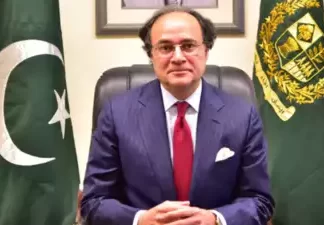The 2024 election proved to be one of the slowest ever, particularly for advertising agencies which saw limited engagement from political parties.
The election cycle has seen only a minimal share of campaign activities being allocated to advertising agencies. While this has left some agencies content, others feel that the current elections have not turned out to be as lucrative for their business as expected.
Political parties and advertising agencies
There was a period in Pakistan when election candidates would organize dedicated teams to effectively manage their campaigns, tasked with holding rallies, corner meetings, distributing printed materials, and organizing processions. These teams were also responsible for delivering press releases to newspaper offices, helping candidates spread their party’s platform and their own messages via news articles. Over time, the role of conducting election campaigns in Pakistan started to transition to advertising agencies. This shift became particularly evident during the 2008 elections, when advertising agencies heavily entered the election campaign scene, earning significant profits. However, in the latest election cycle, although advertising agencies anticipated engagements from politicians and political parties, it has been reported that they received no substantial assignments.
In a discussion with Profit, Aitezaz Sarlah, the Executive Director of Creative Junction, highlighted a significantly altered landscape for advertising agencies this time. A key shift came with the directives from APNS and CPNE, requiring any APNS-accredited advertising agency to prepay for any advertisements broadcasted on television channels or published in newspapers during election campaigns. Sarlah pointed out that advance payments pose a challenge for advertising agencies, which typically operate on credit terms with clients and need time to manage settlements with media outlets. Consequently, traditional campaign efforts were largely absent from advertising agencies’ offerings in this cycle. Moreover, Sarlah noted the difficulty in financial recovery from political parties and candidates post-elections, regardless of their victory or defeat. Winning candidates, he observed, gain enough influence to evade payment, whereas those who lose present the loss as a reason for their inability to settle accounts. Sarlah also mentioned the presence of market players who independently finance political campaigns, confident in recouping their investments through indirect benefits or other arrangements, despite the upfront financial burden.
According to Sarlah, in the last elections, the campaigns of PTI, PML-N, and Pakistan People’s Party were carried out through various advertising agencies. Yet, Sarlah humorously remarked that the payment process was exceptionally difficult.
“Advertising agencies tend to prioritize political parties over individual candidates because a candidate campaigns within a single constituency. However, political parties campaign nationally and have larger budgets, making these campaigns more attractive to agencies. Historically, agencies would offer detailed presentations on marketing the party’s manifesto and the unique promotional materials required. Political parties would set aside a budget for campaigns, which would be visible through newspapers, TV channels, and banners along major roads. This time around, PTI’s conventional campaign is virtually invisible. Only two political parties, PML-N and Pakistan People’s Party, have recently utilized newspapers and TV channels for campaigning. PML-N’s campaign is overseen by Inam Akbar’s advertising agency. Meanwhile, other candidates and parties are focusing on social media and digital media for their campaigns, bypassing the need for advertising agencies. They have assembled their own teams and directly pay social media platforms to conduct their campaigns. While advertising agencies can still propose and present strategies for more effective digital campaigns to candidates, the profit margins are much lower.”
Aitezaz Sarlah clarified that traditional campaigns offered advertising agencies a lucrative profit margin, allowing them to retain a 15% service charge. “For instance, if a political party engaged an agency for a campaign costing one hundred million rupees, the agency could anticipate a profit of fifteen million rupees. Even after offering a five million rupee discount to the client, the client would be pleased, enhancing the agency’s market reputation and attracting more business. Yet, this profit depended on successful payment recovery. Political parties often ran their campaigns on credit, and if they failed to make payments post-election, they might compensate the agency with different projects. Currently, with the shift towards social media campaigns, politicians initially hesitated to directly and upfront pay for video production, messaging, designing, and editing. Nowadays, many politicians prefer to shoot videos on mobile phones and share them on social media, achieving their goals effectively, which is indeed a practical approach.”























